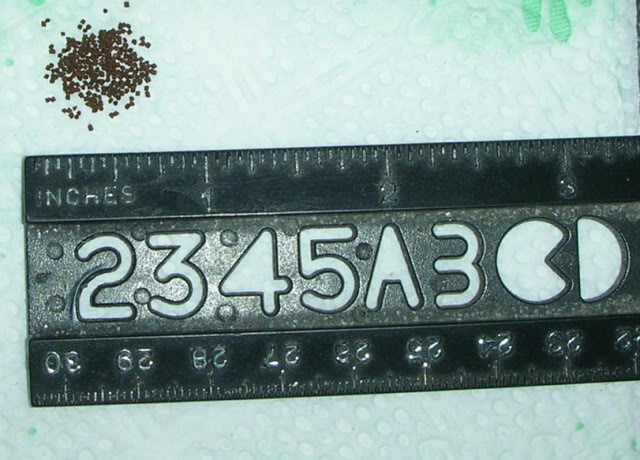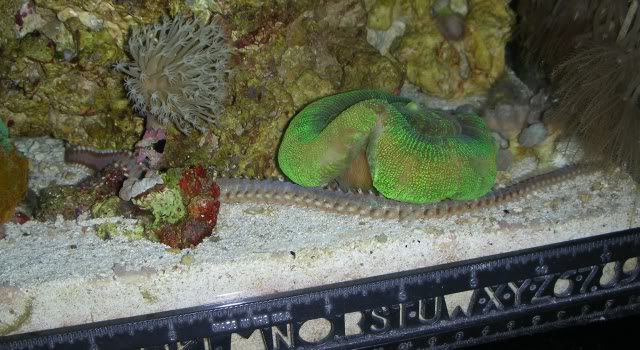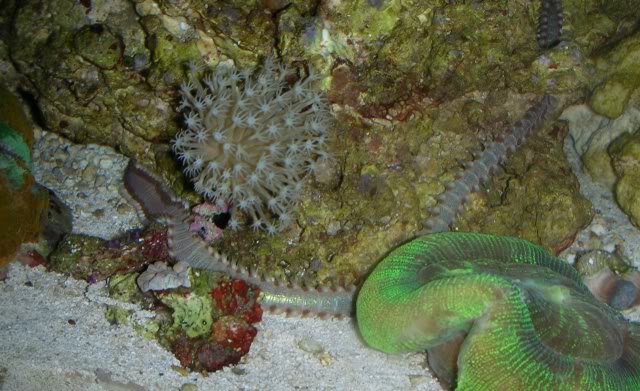They do crawl up the glass, at least the tiny ones do. I doubt they'd actually crawl out, probably dry up quickly if they did. The only time when I see mine during the day is if I lift a rock up. At night w/ a flashlight is when I see mine on the walls. Haven't checked lately hoepfully the population is down. I bought a small tank setup that was being overfeed. The population has been dropping since I had it. and if that tiny CBS that I put in there is still alive, he might be taking care of a few for me.
You are using an out of date browser. It may not display this or other websites correctly.
You should upgrade or use an alternative browser.
You should upgrade or use an alternative browser.
wanting bristles am i crazy?
- Thread starter xxwolfpackof1xx
- Start date
The friendliest place on the web for anyone with an interest in aquariums or fish keeping!
If you have answers, please help by responding to the unanswered posts.
If you have answers, please help by responding to the unanswered posts.
xxwolfpackof1xx
Aquarium Advice Addict
ok i feel much better lol
...If they get more then 4-5 inches long you are overfeeding the tank....
I'm not sure if I completely agree with that due to their ability to consume detritus and waste (as well as waste which has been re-digested several times over) in the tank. I also suspect they can thrive on minute levels of nutrients. Also there are just some species which get large.
I kept a small fishless reef tank which housed only trumpet coral frags (no CUC or purchased inverts) and in 20 months never fed the tank, yet it had pods and bristleworms all the same.
I suspect the pods consumed film algae and the bristleworms consumed their waste. The largest of the bristleworms was about 3"; not quite 4-5" but again I never fed the tank. I do agree that overfeeding will result in a larger bristleworm population though.
In my 65gal reef tank I keep three small fish (2.5"-3") and for about the last 3 years have fed the tank very sparingly. I provide them this small pinch of pellets every 3 days:

The fish eat the majority of these pellets before they fall to the sandbed and what they miss, my hermit crabs, two nassarius snails, and my serpent seastar consume.
And yet I have one of these in my tank:


The entire body of this large-species bristleworm appears to be several times greater than my largest fish (a royal gramma). I catch rare glimpses of this giant a few times a year (usually during the very early morning hours).
I don't think it is a product of overfeeding because as mentioned I feed only a small quantity every three days and the fish and CUC eat all of it before the lights go out (this thing hates the light).
In the bottom left corner of the first photo is an amphipod burrow filled with its waste and other detritus. I've seen the small crustaceans sort through and re-consume that matter over and over again. I suspect that this large bristleworm (and the smaller bristleworms in my unfed frag tank) patrol the sandbed for micro-particulate matter such as this (digested matter from fish and pods, as well as detritus). And again, I do believe overfeeding will result in a larger population of bristleworms, but that the size of individual bristleworms isn't directly correlated to overfeeding. The mere presence of consumable matter is all that is required.
He may have been that large when you bought the rock and introduced him to your system. I doubt he grew that large with your feeding habits in a 65 gallon tank. I had some very large worms in my 65 gallon FOWLR, but they didn't grow to that size in my system. The woman I bought the rock from had a tank with nitrates in excess of 100 from overfeeding and neglect. Everything was dead except a maroon clown. I bought it for cheap, but the first night after I took it home I saw some massive bristle worms. I trapped them and gave them away.
Several days later I noticed some small worms, 1-2". I left them alone, they never grew to more then 3-4" in my system.
Several days later I noticed some small worms, 1-2". I left them alone, they never grew to more then 3-4" in my system.
xxwolfpackof1xx
Aquarium Advice Addict
even after all this i still want a bw no one seems willing to part with one though
Sarcothelia
Aquarium Advice FINatic
I don't like the fatty pink ones...Had a 10" one in my 14g cube. The black and white ones are fine with me. Polychaetes include just so many species.
Similar threads
- Replies
- 7
- Views
- 399
- Replies
- 2
- Views
- 234
- Replies
- 5
- Views
- 631
